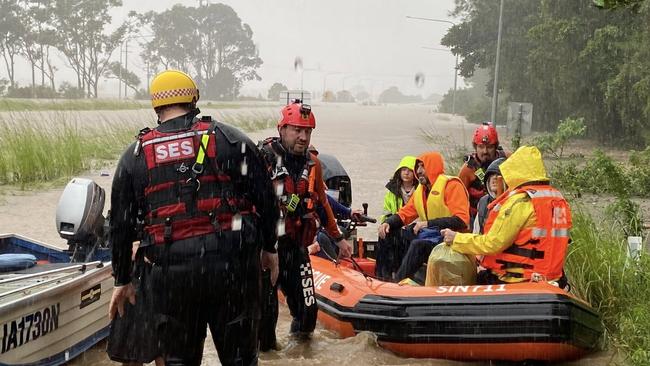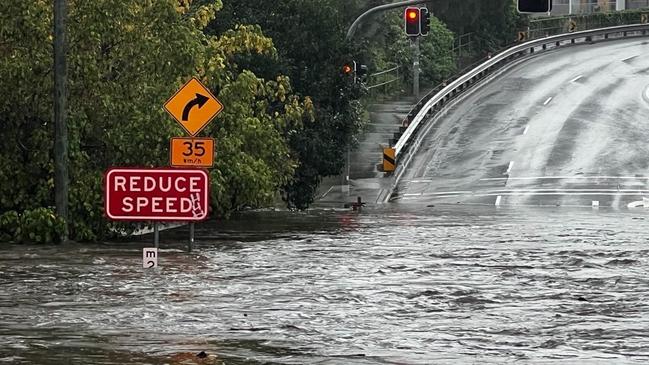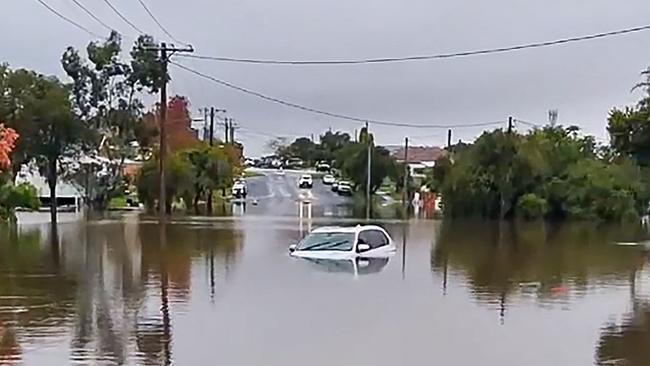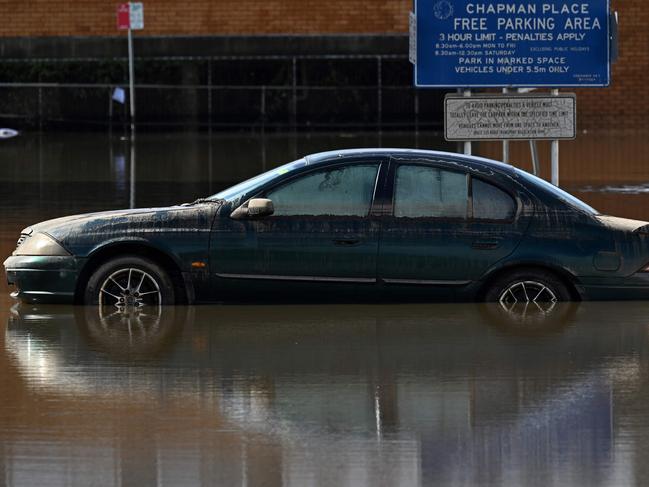‘Killer cars’: Fatal mistake too many Aussies are making
Aussies often rely on their cars in times of desperate need but there are occasions when they can turn into death traps right before our eyes.
They’re built to protect us, packed with airbags, reinforced cabins and intelligent driver aids.
But when floodwaters rise, even the safest cars on Australian roads can become deadly traps.
As New South Wales reels from one of its most severe weather disasters in recent years, thousands have been cut off, homes destroyed and lives lost.
Entire communities across the mid North Coast have been left stranded.
An estimated 12,000 people are still isolated, more than 793 rescues by NSW State Emergency Services (SES) have been carried out and at least five people have died – three of them found trapped in their vehicles.
Among those deceased – a man in his 70s found in his vehicle off the Orara Way at Nana Glen.
A 60-year-old woman who was caught in flood water while travelling from Sydney to Coffs Harbour in a four-wheel drive and a body of a man believed to be in his 80s was found inside a burnt-out vehicle inside a shed.
MORE: Aussie Tesla owner’s nightmare laid bare

These aren’t isolated tragedies but part of a growing problem and according to NSW State Emergency Services (SES), it’s one that’s largely misunderstood.
“Many drivers mistakenly believe it’s safe to cross floodwaters, underestimating the depth, strength and hidden dangers,” a NSW SES spokesperson said.
Between 2001 and 2017, 96 Australians lost their lives in flood-related vehicle incidents, of those 66 per cent drowned.
While the numbers may seem low, they could have been prevented and as weather events across Australia intensify, experts warn these incidents will become more frequent.
‘A car is a boat with a big leak’
A vehicle offers transportation but in times of panic, they’re used as shelters and as an escape method.
But in rising waters, these safe vehicles can quickly become death traps.
NSW SES said the science is simple: Just 15 centimetres of moving water can cause a driver to lose control and 30 centimetres is enough to float most vehicles.
“Many drivers mistakenly believe it’s safe to cross floodwaters, underestimating the depth, strength, and hidden dangers, but even shallow water can sweep vehicles away. If it’s flooded, forget it,” a NSW SES spokesperson said.
MORE: Trump declares war on ‘world’s worst car feature’

Professor Giesbrecht, a world-renowned expert in vehicle submersions based in Canada, has spent nearly two decades studying how people can escape from sinking vehicles.
He says survival depends on acting quickly.
“People think they’ll be rescued, or they believe they can wait until the car fills with water to open the door. Those are misconceptions, and they’re deadly,” he said.
Dr Giesbrecht explained that most assume the safest option is to stay within the vehicle, with all doors and windows secured but that’s when the vehicle can quickly become a “death trap”.
He explained that once a vehicle enters water it will initially float, but not for long.
“You have about one minute to get out,” he said.
MORE: iPhone car coming to Australia
“The water is higher on the outside because the vehicle’s heavy. It’s very difficult, if not impossible, to open the doors,” he said.
Attempting to open the door, he warns, can cause water to rush in, forcing the vehicle into a nosedive or in some cases, slamming the door shut.
“You should never open the door,” he said.
Professor Giesbrecht has conducted more submersion escape tests than any other researcher in the world and says the biggest danger isn’t the water – it’s time.
Many make the mistake of believing the car will protect them, or that waiting for help is the safest option.
But in a flood event, even emergency services can’t respond in time.
MORE: The Yank tank cutting Australia in two

The ‘stop, drop and roll’ of flood-related emergencies
In a fire emergency, the standard procedure we learn is “stop, drop, and roll.”
But how come we never learnt what to do in a flood-related emergency?
According to a 2017 study by Professor Giesbrecht, 94 per cent of people don’t know how to escape a sinking vehicle.
Professor Giesbrecht said it’s simple, escape through the window immediately.
If the vehicle’s electronics are still functioning, the powered windows should open.
To help people remember, Professor Giesbrecht has developed the acronym SWOC – seatbelts off, windows open, out immediately and children first.
Professor Giesbrecht hopes that by teaching people the SWOC method, lives can be saved.
“These are tragic because you get people who are awake and functional, who drown because they don’t know how to escape,” he said.
But most drivers in Australia will never be taught this.
A NSW SES spokesperson said SES will continue educating communities with knowledge about the dangers of driving through floodwaters.
“Helping drivers make safer choices and stay prepared during severe weather events as many drivers still underestimate the dangers of driving through flood waters,” a NSW SES spokesperson said.

With more than 12,000 people remaining isolated, SES Superintendent Dallas Byrnes said they are still witnessing dangerous behaviour.
“People are still driving into floodwaters, which is really concerning – incredibly dangerous,” he said.
Originally published as ‘Killer cars’: Fatal mistake too many Aussies are making




